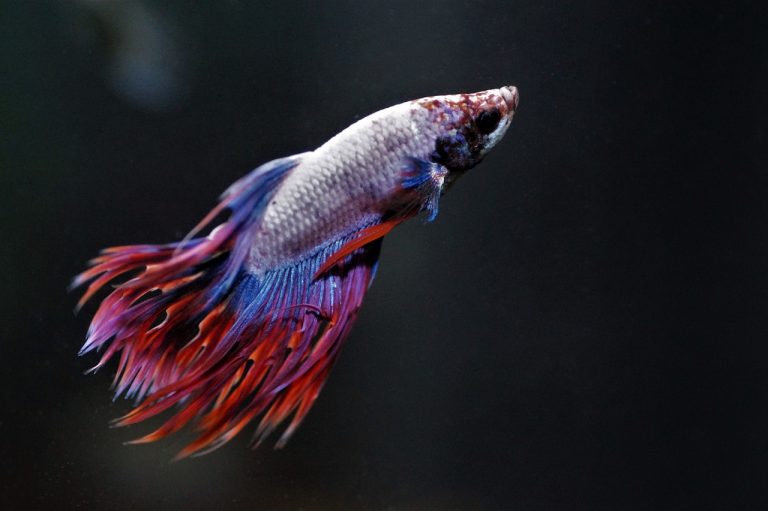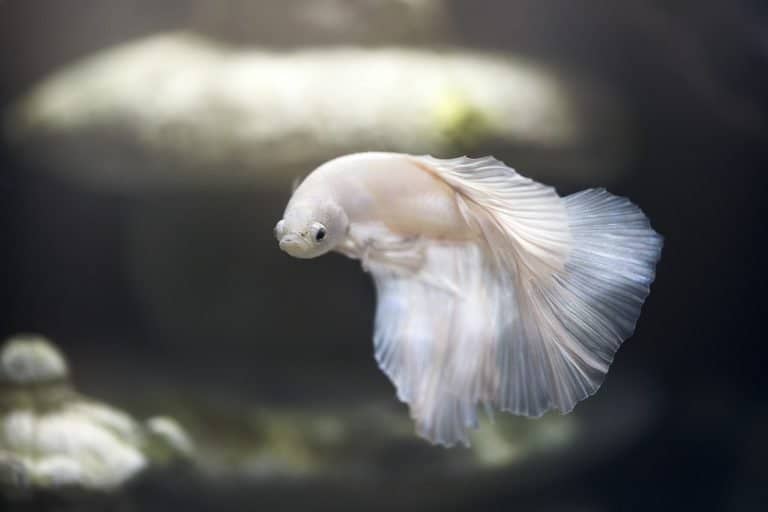In the intricate dance of underwater life, the betta fish emerges as a creature of silent expression, its body language a subtle canvas revealing its internal state.
To truly comprehend the silent articulations of your betta fish, a keen understanding of its behavior is essential. This guide is crafted to empower aquarists with the knowledge to interpret the nuanced signals of flared gills, fin positions, stress stripes, swimming patterns, and color changes.
By mastering the language of the betta, enthusiasts can ensure the freedom and well-being of these aquatic marvels, fostering an environment where these vibrant beings can thrive in the tranquility of their aquatic realms.
Join us on this journey of discovery, as we unlock the secrets of betta communication, enhancing the symbiotic bond between fish and caretaker.
Key Takeaways
- Flared gills indicate aggression or territoriality, not labored breathing or a pathological condition.
- Fin positions can indicate stress, comfort, or readiness to interact.
- Stress stripes are vertical or horizontal color bands that indicate distress or discomfort.
- Color changes in betta fish can indicate health and stress levels.
Deciphering Flared Gills
When a betta fish exhibits flared gills, it is often a display of aggression or territoriality, signaling a readiness to confront perceived threats. This gill display, while primarily a social signal, also necessitates consideration of gill health.
Flared gills should not be mistaken for labored breathing or a pathological condition, where the breathing rate might be consistently elevated or irregular. Under normal circumstances, flared gills are a transient behavior, not indicative of chronic respiratory distress.
To ascertain the health of the betta’s gills, one should scrutinize the frequency and context of the behavior, along with the physical appearance of the gill tissue. A healthy betta will exhibit bright, clean gill filaments, and a regular, unlabored breathing rate when not displaying aggression or territoriality.
Interpreting Fin Positions
A betta fish’s fin positions can provide valuable insights into its emotional state and health, with certain postures indicating stress, comfort, or readiness to interact. Understanding these subtle indicators can help betta owners provide a more conducive environment for their aquatic companions.
- Fin Clamping
Stress Indicator: Fin clamping, where fins are held close to the body, often signifies discomfort or unease.
Health Concern: Persistent clamping may indicate water quality issues or disease.
- Tail Twitching
Communication: Quick, subtle flicks or twitches of the tail fin can be a mode of betta communication, sometimes reflecting minor irritations or confrontational stances.
Environmental Reaction: Sudden, sporadic twitching may be a response to changes in the tank environment or water parameters.
Recognizing these nuances in fin behavior empowers owners to respond proactively, ensuring the well-being and autonomy of their betta fish.
Recognizing Stress Stripes
Betta fish exhibit stress stripes, vertical or horizontal color bands, as a clear physiological indicator of distress or discomfort. These distinct markings are typically more pronounced in females but can appear in males under significant stress. The appearance of stress stripes is an adaptive response and can be triggered by various environmental factors or health issues.
| Stressor | Behavioral Manifestation |
|---|---|
| Poor water quality | Frequent hiding |
| Inadequate diet | Appetite loss |
| Overcrowding | Extended periods of hiding |
It is crucial to monitor these stress signals closely to maintain the well-being of your Betta. Scientifically-informed aquarists understand that the presence of stress stripes warrants immediate attention to ameliorate the conditions causing the fish’s discomfort, ensuring the Betta’s environment is conducive to its natural predisposition for freedom and territorial behavior.
Analyzing Swimming Patterns
Observing the swimming patterns of Betta fish provides another essential indicator of their well-being, with erratic or lethargic movements often signaling underlying issues.
Notably:
- Erratic Darting
- Indicators: Sudden, rapid movements; inconsistent swimming trajectories.
- Potential Causes: Stress, parasitic infestation, or water quality deficiencies.
- Mitigation: Assess environmental parameters; consult a veterinarian for health concerns.
- Lethargy
- Indicators: Minimal movement; reluctance to swim or explore.
- Potential Causes: Suboptimal water temperature, illness, or fatigue.
- Mitigation: Verify heater functionality; evaluate for disease.
- Surface Skimming
- Indicators: Frequenting water’s surface; gasping movements.
- Potential Causes: Oxygen deprivation, labyrinth organ function.
- Mitigation: Ensure adequate aeration; consider water agitation solutions.
Analyzing these patterns within the context of Betta fish physiology and environmental needs is vital for the maintenance of their liberty and vitality.
Identifying Color Changes
Color variation in Betta fish can be a significant indicator of health and stress levels, warranting careful monitoring by owners. Alterations in hue or intensity can reflect underlying physiological conditions, including gill health, which is paramount for proper respiration and metabolic function. A vibrant scale shimmer, conversely, often signifies a Betta in prime condition, showcasing the freedom of robust vitality.
| Color Change | Possible Indication | Emotional Trigger |
|---|---|---|
| Dullness | Stress or Illness | Concern |
| Darkening | Aggression or Fear | Alertness |
| Brightening | Good Health | Joy |
Discerning these chromatic shifts enables aquarists to respond rapidly to the needs of their Betta fish, ensuring a life unencumbered by preventable ailments and conducive to their inherent desire for autonomy within their aquatic domain.




